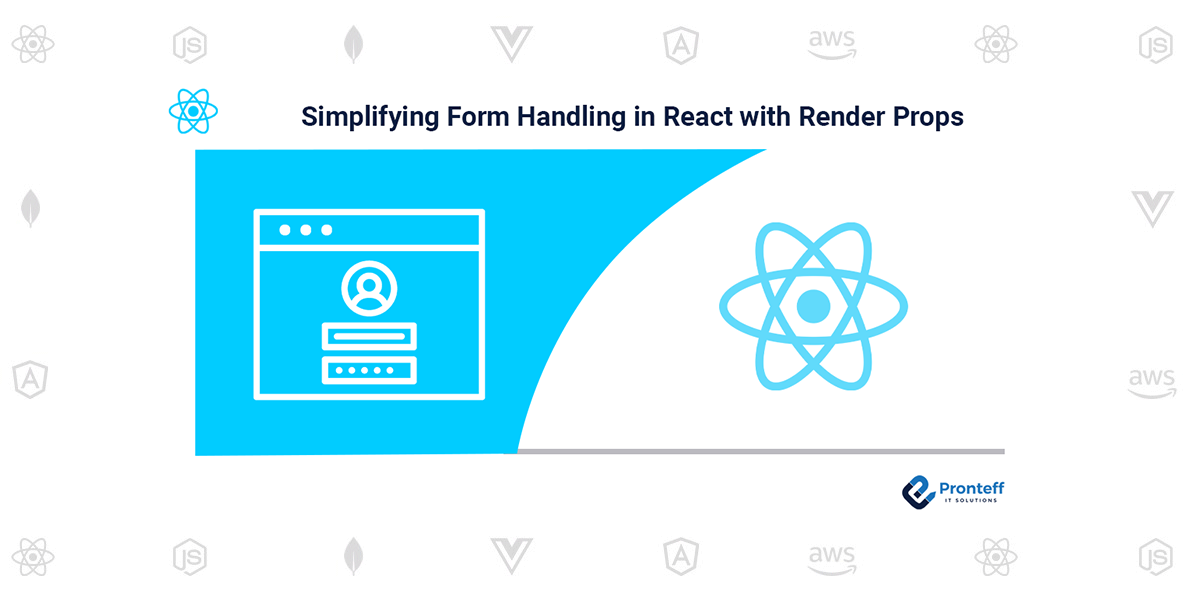Simplifying Form Handling in React with Render Props
Here in this blog, we will learn how to simplify form handling in react with render props.
Introduction :
Form handling is a common task in web development, and React provides various approaches to manage form state and user input. In this blog post, we’ll explore a simple yet powerful technique for form handling using Render Props in React. By leveraging Render Props, we can create reusable and flexible form components that adapt to different use cases with ease.
Understanding Render Props :
Render Props is a pattern in React that involves passing a function as a prop to a component. This function, also known as the render prop, encapsulates logic or state within the component and exposes it to its children. Render Props promote code reuse, composability, and flexibility by allowing components to share functionality with other components through render props.
Form Handling with Render Props :
Using Render Props for form handling involves creating a form component that encapsulates form state, validation logic, and event handling. The form component exposes render props that control form submission, input validation, and error handling. By passing these render props to the form component’s children, developers can customize the behavior and appearance of the form based on the requirements of the application.
Example Implementation :
Let’s consider a simple example of form handling using Render Props in React. We’ll create a `Form` component that manages form state and exposes render props for form submission, input validation, and error handling. Consumers of the `Form` component can customize the form’s behavior by providing render prop functions that handle form events and display form elements.
// Example Form component with Render Props const Form = ({ onSubmit, children }) => { const handleSubmit = (event) => { event.preventDefault(); onSubmit(event.target.elements); }; return ( <form onSubmit={handleSubmit}> {children({ handleSubmit, })} </form> ); }; // Usage <Form onSubmit={(formData) => console.log(formData)}> {({ handleSubmit }) => ( <div> <input type="text" name="username" placeholder="Username" /> <input type="password" name="password" placeholder="Password" /> <button type="submit" onClick={handleSubmit}>Submit</button> </div> )} </Form>
Benefits :
Using Render Props for offers several benefits, including code reusability, flexibility, and separation of concerns. By encapsulating form logic within a reusable component and exposing it through render props, developers can create flexible and customizable form components that adapt to different use cases. Render Props promote clean and maintainable code by separating form-related logic from presentation concerns, making it easier to manage and extend form functionality in React applications.
Conclusion
In this blog post, we’ve explored how Render Props can simplify form handling in React applications, offering a flexible and reusable approach to managing form state, validation, and submission logic. By leveraging Render Props, developers can create elegant and maintainable form components that meet the diverse needs of modern web applications.







